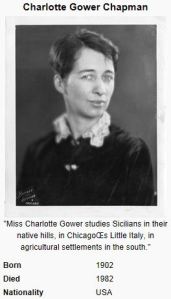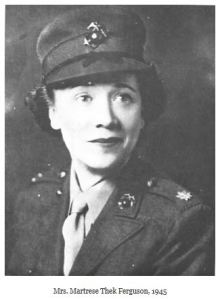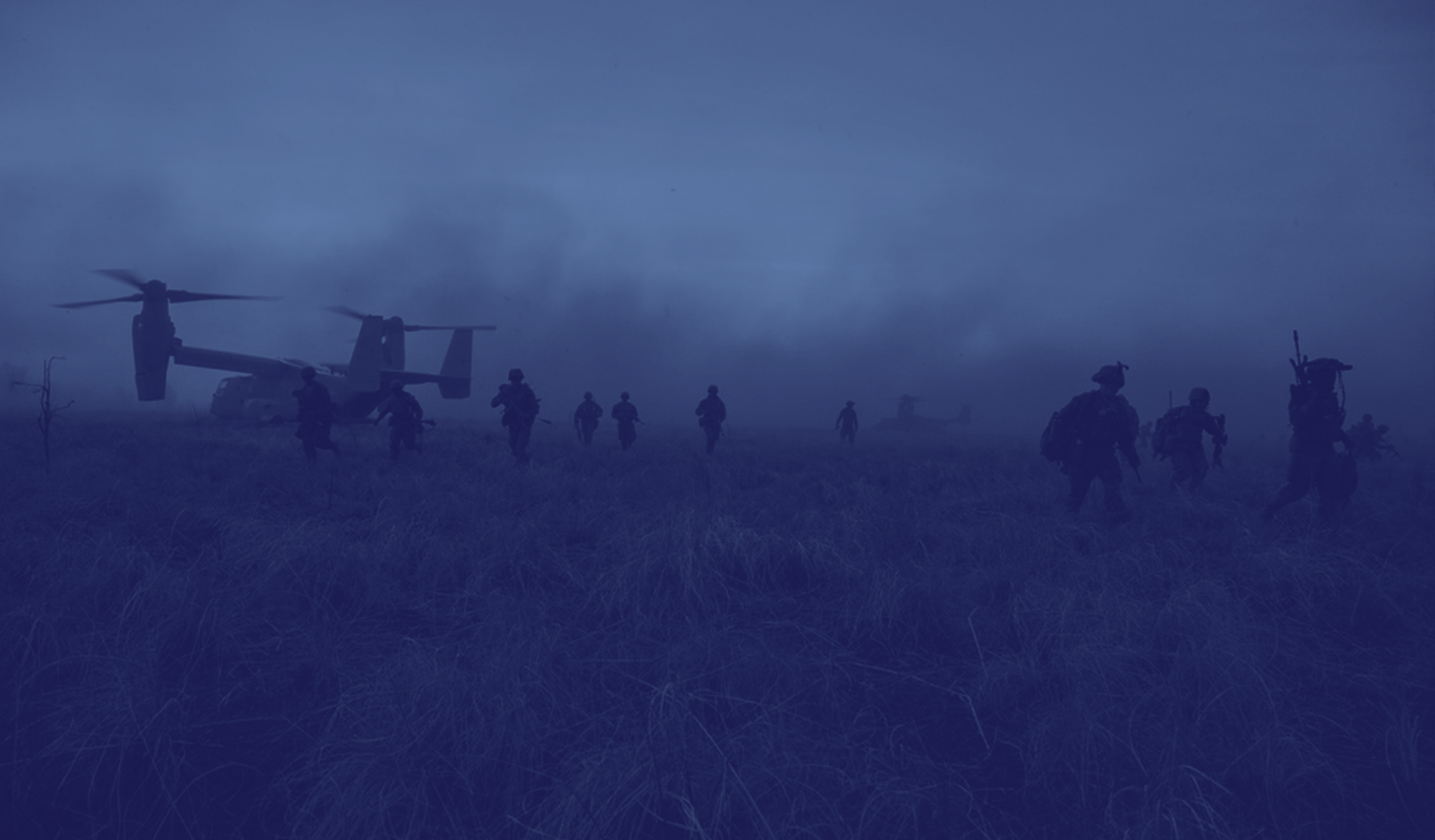Did you know?
By Nancy Wilt
Did you know that two women Marines had been held as prisoners of the Japanese prior to United States declaring war on Japan?

Captain Charlotte Day Gower became one of the first eight women sworn into the Marine Corps in January 1943 to serve as Director of Training for the Women’s Reserve.
Marine Staff Sergeant Mary Virginia Herst of Kansas was teaching in Bangkok, Thailand, when the Japanese attacked. She spent nine months in a prisoner of war camp before being repatriated in a prisoner of war exchange. After training in multiple aviation MOS’s, Mary was assigned to MCAS El Toro, CA.
Did you know that PFC Peggy Urzendowski while never a prisoner of the Japanese, had spent most of her life growing up in Singapore, Hong Kong and the Philippines? While fleeing the Japanese, she found herself on the island of Corregidor during two horrific Japanese bombing attacks. She was picked up by a troop transport headed for New Zealand where she managed transport to Australia and then on to Hawaii and eventually back to the States. Once home, Peggy quickly enlisted in the USMCWR and was stationed at Marine Corps Base, San Diego.

Lillian O’Malley Daly proudly wore the Marine green during both WWI and WWII and proudly wore her WWI medals. Captain Daly was a direct commission in January 1943 immediately transferred to Camp Pendleton to fill the position of West Coast Liaison for the Women’s Reserve. Both of these proud Marines served in WWI in the Office of the Inspector Adjutant.
Did you know that three other women with unique World War I records served as Marines in World War Two?
Helen O’Neill proudly wore Navy blue as a WWI Yeoman (F) and had 25 years of naval civil service before she received a direct commission into the Marines in January 1943. Having worked for numerous Assistant Chiefs of Naval Operations, she was well-known by senior Marine Corps leadership. Major O’Neill was also a linguist in Latin, French, Spanish and Russian. She also formed the National Yeoman (F) organization, the first former service organization of the US Naval Reserve and had held a senior position in the organization. She served as Deputy of the Director of Women Marines during WWII. Frances W. Pepper joined the staff of the Marine Corps in 1923 as a civilian employee working in the Office of the Adjutant and Inspectors Department. Frances also held a Bachelor of Law Degree and was made admitted to the District of Columbia Bar 1931. She later did post-graduate work in international law. She attended the third Women’s Officer Class at Mount Holyoke and was commissioned a captain at the completion of the course. In WWI, she worked for the Young Women’s Christian Organization (YWCA) and was assigned to General Pershing’s headquarters in France. She was recognized by General Pershing for her work on , numerous programs assisting Soldiers and Marines. Helen Crean while assigned to the American Red Cross in France was awarded the French Croix de Guerre for heroism under fire while working at the dressing station for wounded in Glorieux, France. When the station came under heavy bombing and machine gun fire, her gallant actions in protecting the wounded during the attack resulted in her being awarded her medal. Also while in France she gathered information and needs of the wounded in numerous field hospitals and dressing stations in the area of Verdun and opened a canteen for the 5th Marine Regiment at Naix- au-Forge. In WWII, Major Helen Crean served as the Commanding Officer of women units at MCAS Santa Barbara, CA, and at MCAS Ewa, Territory of Hawaii.
Did you know you could hop a freighter to be a Marine, and that’s exactly what happened to Natica R. Macy. Natica was living in Bermuda when the public announcement was made that the United States Marine Corps Women’s Reserve was recruiting members. She literally jumped an old Greek freighter bound for the States and worked her way by painting decks, caulking wood and standing watch as the only woman member of the crew. It was literally the first ship out to the US.
(Thanks to LtCol Par Reid, USMCR for her outstanding Marine Corps Women Reserve in World War II 1968 edition).
Known by Generations
Recently, WMA lost a very special Marine, a WWII Marine; Emma Holmes joined our Corps with the same desire as her sister Marines in WWII to “Free a Marine to Fight”, but that was not to be. Emma sustained a paralyzing spinal injury during boot camp that changed her life, forever. Emma Holmes, while a patient at a VA hospital in Florida met two WW I women Marines veterans who were Gray Lady volunteers.) Emma kept in contact with these women and volunteered to take on the project of trying to contact as many of their sister Marines that she could. She would write to them and started exchanging letters with them and gradually en massed a listing of 130 “WW Onederfuls”, as she named them. She also learned that these women wanted to reach out to their former buddies.
To fulfill their wishes, Emma sent another letter asking each to tell of her time in the Corps, single name, place of birth, her friends in the Corps, duty station, and any other info she wanted passed on to the other WWI women. Emma then gathered all the letters and created a newsletter, retyping each letter received (on a manual typewriter) and then printing the newsletter on a hand-operated mimeograph machine, sending the final newsletter to the women and WMA who then let chapters know about these women. In 1976, Emma received WMA’s National Service Award for “her untiring and devoted dedication to our World War I Women Marines.
In 2013, at the Marine Corps Heritage Foundation Awards dinner she was one of the recipients of the WMA Colonel Julia Hamblet Award for her momentous efforts and inspiration to complete the first known complete listing of the Women Marines who served in World War I. The Emma Holmes Collection is a treasured part of the Women of the Corps Collection. Emma passed away in early December 2013 at the age of 93. Now Emma is home with her “WW Onederfuls!”
Semper Fi,
Nancy Wilt
Curator /Historian Women of the Corps Collection
WOCC@womenmarines.org
